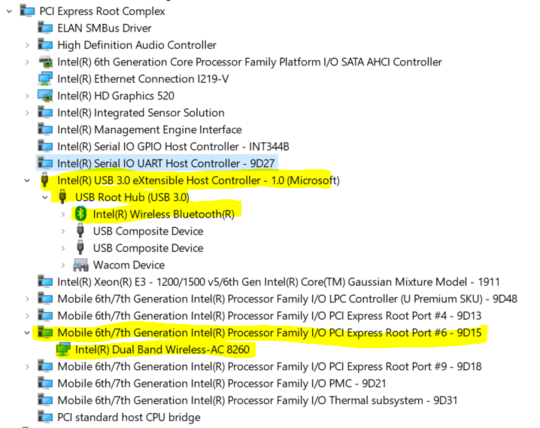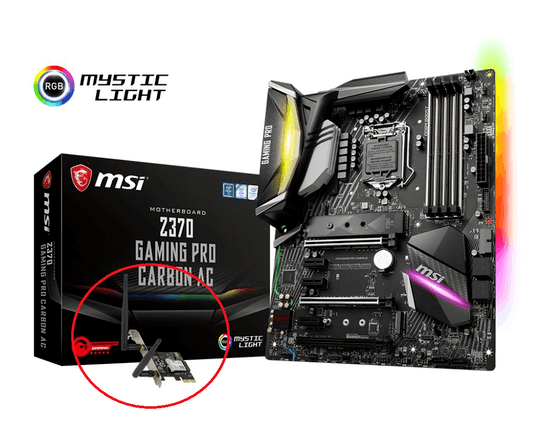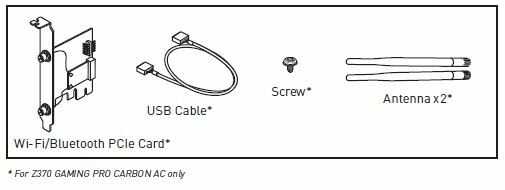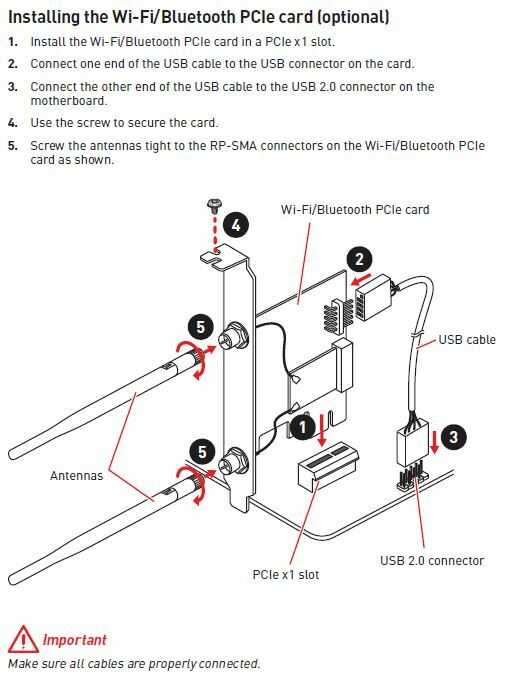As Micheal Frank mentioned in his answer, the motherboard in question comes with a Intel® Dual Band Wireless-AC 8265 card, and Intel's ARK website states: "System Interface Type: PCIe, USB".
This means that the card needs both PCIe and USB to work, not either-or. Typically in these kinds of combo Wifi + Bluetooth cards, whether made by Intel, Atheros (now Qualcomm) or Broadcom, whether in MiniPCIe or m.2 form factor, the PCIe lanes connect the WiFi part, and the USB lanes connect the Bluetooth part.
For example, the following is a screenshot taken from Device Manager on a Windows 10 laptop, where menu "View -> Device by connection" is selected:

Similarly, on a Linux computer, the WiFi card will show up in lspci, and the Bluetooth card will show up in lsusb.
The MiniPCIe and m.2 connection specifications both include PCIe lanes and USB lanes, and for a combo WiFi + Bluetooth card to work properly, both protocols are required. The PCIe adapter provided with the motherboard routes PCIe lanes on the m.2 connector to the PCIe slot, and the USB lanes to the USB connector, where it must be plugged in to the motherboard's internal USB headers using the provided cable. If the cable is not connected, WiFi may work, but Bluetooth will not work. (Certain models of laptops may have either only PCIe lanes or only USB lanes connected on their MiniPCIe / m.2 slots, and if a combo card is plugged in to those slots, only one function will work.)
Since the OP would like to use PCI passthrough to present the wireless card to a virtual machine, both the PCIe device and the USB device must be passed through if WiFi and Bluetooth are both desired in the virtual machine. (Even then it may not work properly, because PCI passthrough is black magic, and many devices don't like it. I have attempted to pass through a simple PCIe WiFi card before, and never got it to work; your mileage may vary.)




It clearly states in the datasheet that this board has WiFi and Bluetooth, even specifying the chipset as an Intel Wireless-AC 8265, according to https://www.msi.com/pdf/presale_v2/Z370-GAMING-PRO-CARBON-AC and Google confirms that chipset is available for USB or PCIe interface, which one is implemented honestly isn't relevant as both are more than sufficient to handle the potential bandwidth needs. These answers are pretty easy to Google, took me just a few seconds.
– acejavelin – 2018-04-11T03:40:53.5673@acejavelin how it's presented to the OS is extremely relevant as I'm looking to do PCI pass-through via IOMMU/VT-d. It is in fact the only reason I asked the question. – FreeSoftwareServers – 2018-04-11T03:42:32.820
2Your question hinted more that you couldn't verify if the board had WiFi and Bluetooth, sorry if I misunderstood. I would find it very unusual for a mainboard, especially a gaming one, to use USB as it's WiFi interface... It would use the PCIe interface. – acejavelin – 2018-04-11T03:44:27.627
@acejavelin I've never had a motherboard with onboard Wi-Fi other than laptops. I figured though, but for the money and time i wanted to confirm. Thanks, your comment plus the answer leave me 100% sure its pci based. – FreeSoftwareServers – 2018-04-11T03:48:22.460
@FreeSoftwareServers I updated my answer slightly. The wireless card is definitely an M.2 style adapter, which is then slotted onto a PCIe x1 card. So I'm fairly certain it must use a PCIe interface. However, there is a USB cable that needs to be attached, although for what purpose, I'm not entirely certain. Could be for the Bluetooth? – Michael Frank – 2018-04-11T04:05:48.373
You could consider getting the MSI Z370 SLI Plus instead of the Z370 Gaming Pro Carbon AC. The SLI Plus is significantly cheaper. Though it does not have wireless. But that allows you to spend the difference in a WLAN PCIe card. – sbecker – 2018-04-11T07:12:09.427